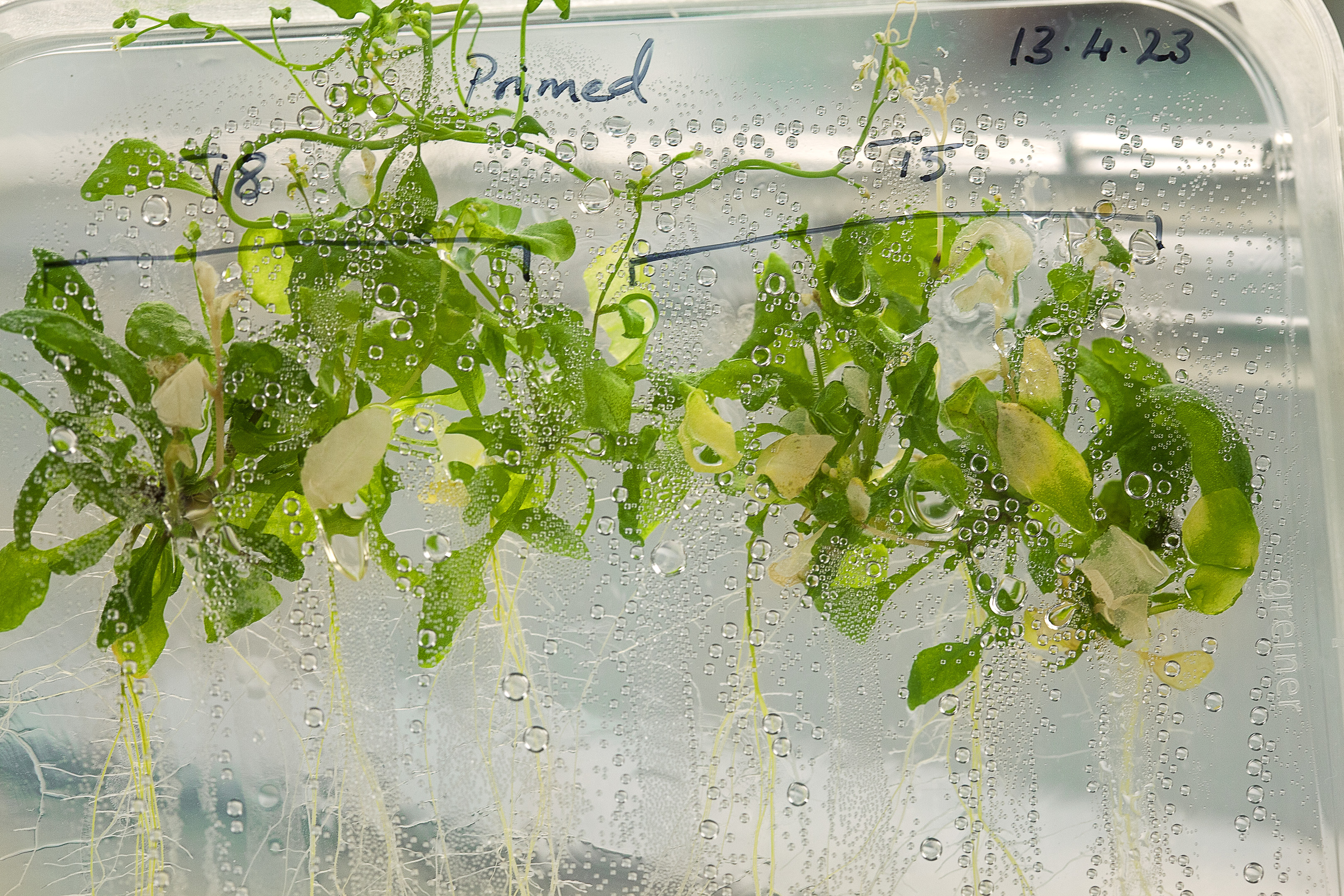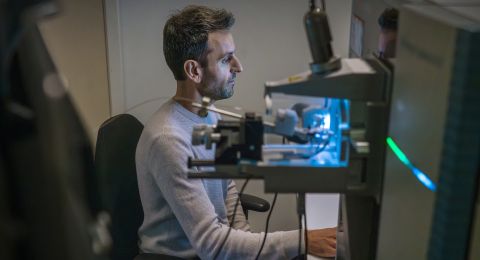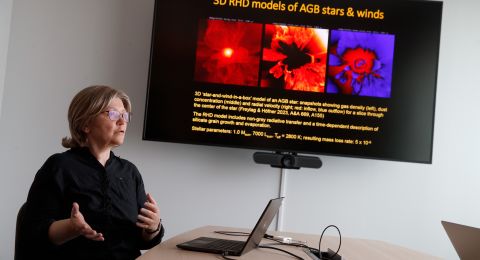
Project grant 2012
Epigenetic regulation of cell fate in plants
Principal investigator:
Lars Hennig, Professor of Genetics
Co-investigators:
Peter Bozhkov
Daniel Hofius
Claudia Köhler
Eva Sundberg
Institution:
Swedish University of Agricultural Sciences
Grant in SEK:
SEK 28.8 million over five years
Partners:
Umeå Plant Science Centre
Karolinska Institutet
ETH Zurich (Switzerland)
Durham University (UK)
VIB (Netherlands)
Institute of Science and Technology Austria (Austria)
University of North Carolina (USA)
Copenhagen University (Denmark)
The Sainsbury Laboratory (UK)
Lars Hennig works in the completely newly built Uppsala BioCenter at SLU campus in Ultuna among well-organized laboratories and nice offices. Time and again, Lars Hennig makes sweeping gestures with his arms towards the window to show that it is actually all the spring-green out there that it is about.
“I have been fascinated by plants ever since I was little and knew early on that I wanted to study biology in order to understand more about how plants develop and work. I still love nature and I love my job. Plant biology is so incredibly fun and interesting,” he says.
When he was working on his doctoral thesis 15 years ago, epigenetics was beginning to gain more attention. Epigenetics is the part of genetics that is independent of changes in the DNA sequence, but means that cells in multicellular organisms develop into different cell types that in turn give rise to various tissues and organs.
“Epigenetics can be said to be ’on top’ of traditional genetics. It problematizes our traditional knowledge about genetics and takes us closer to life's fantastic complexity. I thought it was incredibly exciting to move into this new scientific field. It was like walking unknown soil,” explains Lars Hennig.
Every cell has a “destiny”
Today, he leads a research team whose ambition is to try to understand why for instance a root cell is a root cell and not a leaf cell; how come every cell has its own “destiny” that means that it exists to fulfill and carry out special functions in an organism.
“If cells in an animal develop into something other than what they are intended for, they can develop into tumors and cancer. With plants, there is not an immediate threat of cancer, but it is still completely crucial to the plant that every cell fulfills and carries out its special function for photosynthesis, for the beauty and for other different kinds of benefits,” explains Lars Hennig.

Epigenetics plays a crucial role
One reason that Lars Hennig has chosen to study plants instead of animals is that plants are affected much more by the environment they develop in. Plants cannot run away, but rather must relate to, and cope with, the environment they grow in - and here, epigenetics plays a crucial role.
From the beginning, all cells in a multicellular organism come namely from a single cell. All cells thereby have the same set of DNA. However, under the influence of the surroundings and various signals from other cells, the cells gradually develop into specific cells with special characteristics and functions.
If and how the genes come to expression is regulated by how available various parts of the DNA are for transcription, transmission of information, and thereby production of various proteins. This is controlled by the packaging of the cell nucleus' chromatin, which is a complex of DNA and proteins (mainly so-called histones).
Chromosome segments that are less tightly packed can more easily be used as templates for protein production, while chromosome segments that are tightly packed are locked. These chromatin structures are said to be epigenetic since they arise in addition to and through modification of the information that is in the DNA sequence and can also be inherited by daughter cells.
“The research in our project mainly concerns the packaging of the chromatin. It can be compared to how your apartment is set up, what things are out because you need them a lot and what things you store in the attic or cellar because you don't have any use for them right now. The same way that we take out and put away things in our home, the packaging of chromatin is a dynamic process,” explains Lars Hennig.

Programmed cell death
The researchers' ambition is to study the epigenetic mechanisms that control programmed cell death. This function is important since it makes room for new cells and also works as a defense against bacteria, parasites, viruses and fungi.
Another thing the researchers are studying is chemical modifications of histones, which are sometimes called the epigenetic code. The cells namely have a set of enzymes that can chemically modify the histones by, for instance, adding acetyl, phosphate or methyl groups to the chromatin. This process leads to the packaging of the chromatin changing locally, which in turn means that genes are activated or turned off.
Important research
In his research, Lars Hennig and his colleagues use microscopes, automatic sequencing and statistical algorithms to structure and see patterns in all data they collect. They also work with three different model organisms: thale cress, spruce and a species of moss.
“What we study is fundamental processes in the plants' development that we need to understand to be able to optimize the growth and production of various crops and trees that we are dependent on. If we can understand plants' epigenetics, it is also important knowledge for cancer research,” says Lars Hennig.
Text Anders Esselin
Translation Semantix
Photo Magnus Bergström
GLOSSARY

Genetics:
The science of how characteristics are inherited, how the genetic material is structured and works, how changes in genes arise, and the biological variation.
Epigenetics:
The part of genetics that concerns hereditary, but reversible changes in gene expression that are independent of changes in the DNA sequence.
Histones:
Proteins that DNA is wrapped around.
Chromatin:
Complex of DNA and proteins (mainly histones, but also other gene-regulating proteins). Chromatin's structure is determined by how tightly packed the DNA spiral is around the chromatin's histones. Euchromatin is comprised of chromosome segments that are less tightly packed and thereby more readily available for transcription and protein production. Heterochromatin is tightly packed segments of a chromosome and thereby difficult to access, or locked, for protein production.



